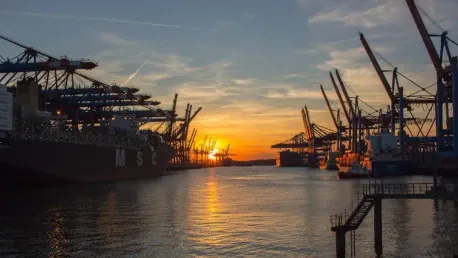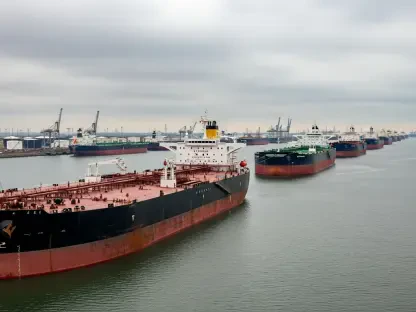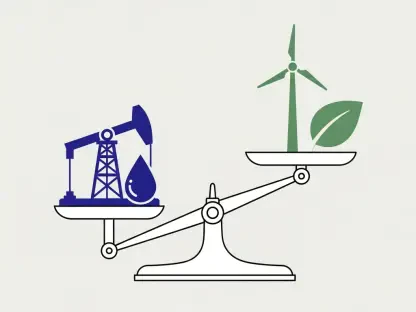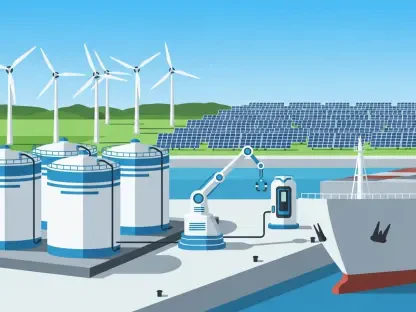The Environmental Protection Agency (EPA) has recently announced a significant regulatory update known as the Vessel Incidental Discharge National Standards of Performance (VID-NSP), published on October 9, 2024. This move marks a critical milestone under the Vessel Incidental Discharge Act (VIDA), aiming to enhance maritime environmental protection by setting stringent national standards for vessel discharges into U.S. waters and contiguous zones. These new regulations are designed to apply to non-recreational, non-Armed Forces vessels that are 79 feet in length and above and also cover ballast water discharges from smaller non-recreational, non-Armed Forces vessels, including fishing boats of any size. With the VID-NSP now in place, the EPA intends to replace existing regulations such as the 2013 Vessel General Permit (VGP). However, the full effect of these standards is contingent upon the United States Coast Guard (USCG) developing corresponding regulations detailing their implementation, compliance, and enforcement mechanisms.
Overview of VID-NSP Regulations
The VID-NSP divides its standards into two main categories: general discharge standards and specific discharge standards. General discharge standards are primarily focused on best management practices (BMPs) aimed at minimizing the introduction of pollutants, with subdivisions under General Operation and Maintenance, Biofouling Management, and Oil Management. Concurrently, specific discharge standards are directed at 20 distinct types of vessel equipment and systems.
Though the VID-NSP standards aspire to be at least as stringent as the VGP requirements, if not more, they are not direct transcriptions of VGP stipulations. Significantly, some modifications have been made to transition the permit-based requirements into more enforceable national standards of performance. To clarify these changes, the standards are organized into three groups. Thirteen discharge standards remain largely unchanged from VGP requirements, maintaining the status quo in critical areas like boilers, chain lockers, fire protection equipment, gas turbines, and inert gas systems. Two standards, bilge management and desalination and purification systems, have undergone slight modifications to enhance clarity or increase stringency. Lastly, five standards—covering areas such as ballast tanks, exhaust gas emission control, graywater, hulls, and seawater piping—have seen significant changes either to increase stringency or improve operational clarity.
Impact on Specific Vessel Equipment and Systems
The unchanged discharge standards include vital aspects such as boilers, chain lockers, fire protection equipment, gas turbines, and inert gas systems. These standards offer consistent regulation across essential vessel components, ensuring continuity for operators familiar with VGP stipulations. The EPA’s retention of these standards underscores the objective of harmonizing environmental protections without disrupting established practices that have been working well.
Minor adjustments to bilge management and desalination systems underscore the EPA’s commitment to refining existing practices. These changes aim to clarify operational expectations and enhance pollution control, ensuring that the standards remain effective and enforceable. Even these small tweaks can have a significant impact, ultimately contributing to the broader goal of minimizing environmental harm from vessel discharges.
The VID-NSP has also imposed tighter regulations around ballast tanks and graywater systems, reflecting the latest environmental and operational insights. These enhanced standards are designed to effectively reduce environmental impacts, illustrating the EPA’s adaptable approach to evolving maritime standards. By incorporating these significant modifications, the VID-NSP aims to provide a more rigorous framework for vessel operations, improving the overall sustainability of maritime activities.
The “New Laker” Requirement
A particularly noteworthy element of the VID-NSP is the “New Laker” requirement, which mandates that vessels built after January 1, 2009, operating exclusively on the Great Lakes and measuring 3,000 GT or above, must implement USCG-approved ballast water management systems. Previously, these vessels were exempt from numeric VGP standards but had to implement certain BMPs. This new requirement addresses a critical area of concern that emerged during public discussions and regulatory development processes.
The inclusion of the “New Laker” requirement within the VID-NSP illustrates the EPA’s proactive approach to managing ballast water impacts within the Great Lakes, a vital freshwater system. By bringing these vessels under the stringent standards of the VID-NSP, the EPA aims to enhance overall environmental protections and provide a more robust regulatory framework for managing incidental discharges in this ecologically sensitive area.
The Role of the US Coast Guard
While the EPA has published the VID-NSP, the actual enforcement and compliance mechanisms fall under the purview of the USCG. The USCG has a two-year deadline from the EPA’s rule publication to develop corresponding regulations, which will detail the implementation and enforcement strategies. Until these USCG regulations come into effect, existing VGP requirements, along with other relevant federal, state, or local regulations, remain operative.
During this interim period, vessel owners and operators are encouraged to assess their current compliance statuses and prepare for the transition to the new standards. Proactive compliance assessment is crucial as the new regulations promise to introduce more stringent and clear frameworks once USCG regulations are finalized. By preparing in advance, owners and operators can ensure a smoother transition and avoid potential compliance issues when the new standards are enforced.
Preparing for the Transitional Period
The Environmental Protection Agency (EPA) has announced a major regulatory update called the Vessel Incidental Discharge National Standards of Performance (VID-NSP), published on October 9, 2024. This update is a key milestone under the Vessel Incidental Discharge Act (VIDA) and aims to improve maritime environmental protection by setting strict national standards for vessel discharges into U.S. waters and contiguous zones. The new rules apply to non-recreational, non-Armed Forces vessels 79 feet and longer and also address ballast water discharges from smaller non-recreational, non-Armed Forces vessels, including fishing boats of any size. With VID-NSP in place, the EPA plans to replace existing regulations like the 2013 Vessel General Permit (VGP). However, the new standards will only become fully effective once the United States Coast Guard (USCG) develops corresponding regulations that detail their implementation, compliance, and enforcement. This collaboration between the EPA and the USCG is essential for the successful rollout of these enhanced environmental protections.









